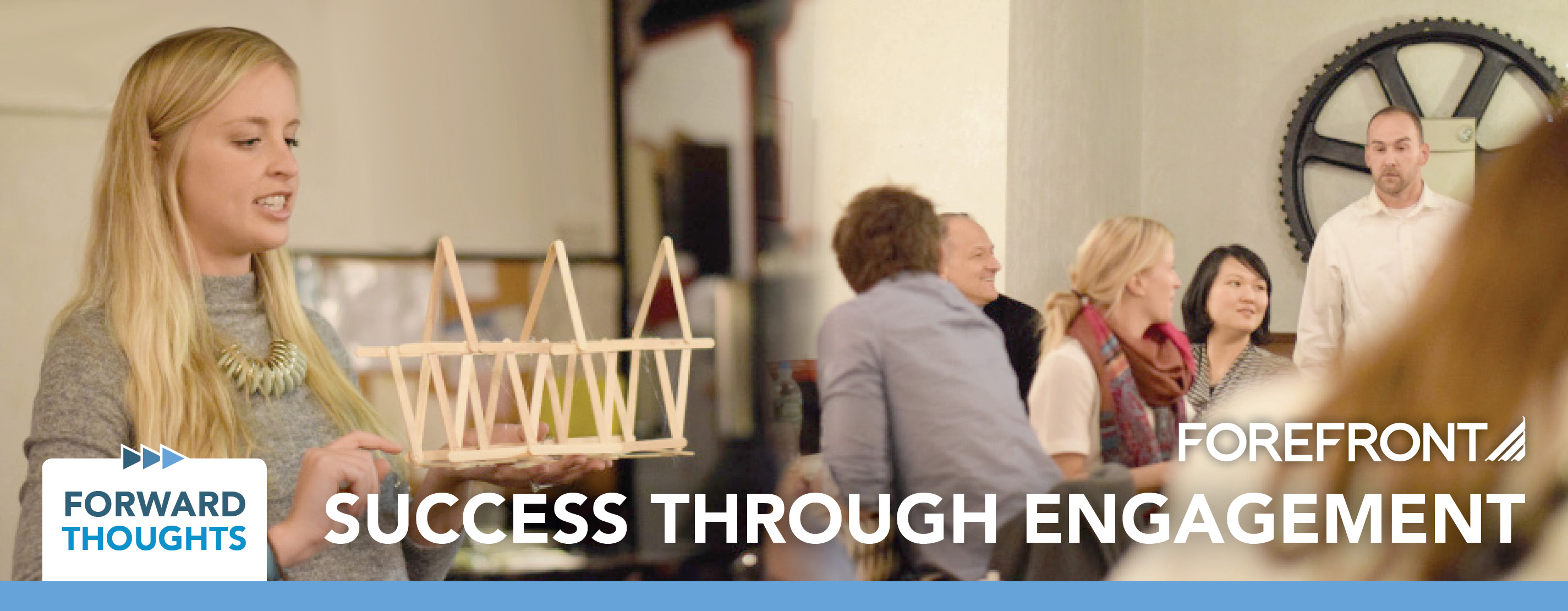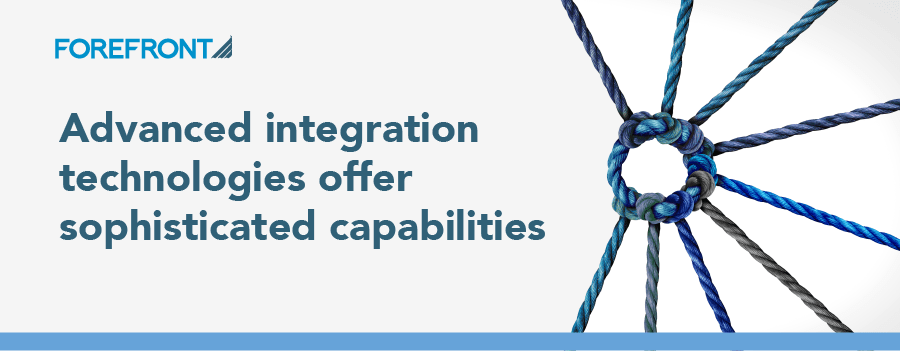
Forward Thoughts:
The Rules of [Project] Engagement
By ForeFront’s Christelle Aponte, Director of Enterprise Services
It’s a shame…
So many System Implementation partners spend weeks, months, or even years designing, building, and implementing the ‘best-in-breed’ system that is going to help their clients streamline processes, improve metrics, and save the planet (if you listened to their sales pitch). And yet, 6 months later the curmudgeons are grumpily doing the minimum possible within the system, the Super Users are getting frustrated because they’re constantly peppered with the same question from training, and the rest have a mixed bag of results.
Why is that?
Engagement… or the lack thereof. Engaging leadership and team members throughout the delivery and post-delivery phases is integral to the long-term success of a project. A small client team may be able to make quick and efficient decisions so that the project remains within scope, timeframe, and budget, but it doesn’t necessarily correlate to long-term success. Instead, you need to establish and enforce the right amount of engagement from the beginning, through deployment, and continually in the months thereafter.
By thoughtfully engaging the right team members during every phase of the project, we have seen incredible success stories with our clients in achieving the desired results for their people, process, and technology.
Early Engagement
Early engagement doesn’t mean that everyone needs to be in every meeting. Conducting a single internal project kick-off meeting to discuss the value, their involvement, and the timeline will help every user be aware of the upcoming project and manage their expectations. It’ll go a long way in starting the adoption process by ensuring group awareness, while simultaneously reinforcing each individual’s importance to the project success.
Other things to consider:
- Consider monthly checkpoints/updates for all impacted parties
- Find a mechanism for soliciting feedback from non-project participants
- Be sure your internal training and/or communication groups have allocated time and resources
- Be sure that leaders are showing excitement about the potential for the tool
UAT Engagement
While various team members will and should be involved during separate phases of the project, the next integral opportunity for engagement and adoption is User Acceptance Testing (UAT). Though it is tempting to only have project team members participate in UAT, you will lose valuable opportunities to gain holistic feedback, catch missed requirements, and proactively train the team.
Other things to consider:
- Ask different ‘types’ of non-project team members to participate (think: someone who is new to the org, someone who is a company veteran, someone who wants to get through the process as fast as possible, and/or someone who is excited about all the bells and whistles)
- Have a UAT Training Session so that they’re aware of what is and isn’t in scope for the current phase of the project, and reinforce expectations
- Be sure the functionality is ready for UAT (perhaps have your internal QA team test first). You don’t want the system throwing an error message within minutes of the start of testing
- Prepare for formal training and deployment communications prior to UAT
Post-Deploy Engagement
Assuming that the project’s training, deployment, and warranty period went well, the project may be considered a success. However, the real test starts after the Systems Implementor is no longer engaged. This is when the team’s true understanding of the system, its benefits, and its workings is apparent. You will need to maintain engagement and continue reinforcement to ensure lasting adoption.
Other things to consider:
- Disable legacy systems/paths to force adoption (if the easy way out is there, some will take it)
- Host on-going mini training sessions to reinforce the primary principles/functions of the technology
- Display metrics prominently within the office or during team meetings
- Celebrate your successes, and show appreciation for engagement
While one blog post could never replace a conversation with a Change Management expert, we hope that this helps you start thinking about the different opportunities available, and considerations for improving the engagement of your team throughout the project, and ultimately improving the likelihood of long-term success.
If you’d like to chat more about how to improve engagement within your project or at your firm, contact us!
ABOUT CHRISTELLE
Christelle is the Director of Enterprise Services and responsible for leading ForeFront’s Enterprise Services practice which focuses on Strategy & Process Optimization, Technology, and Change Management consulting. Christelle brings 13+ years of Management Consulting experience focused specifically on the Healthcare industry. She has broad set of experience including strategic planning, process design, systems implementation, and managing organizational change. She firmly believes that the clients succeed more fully when the people, process, and technology are transformed.







